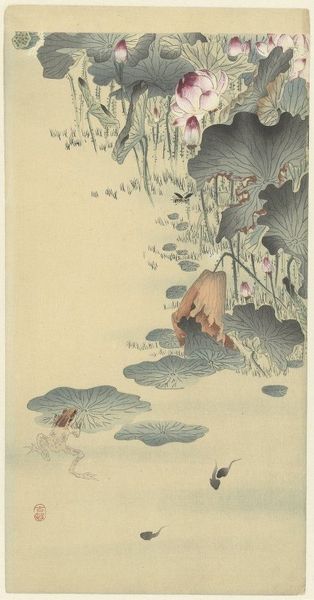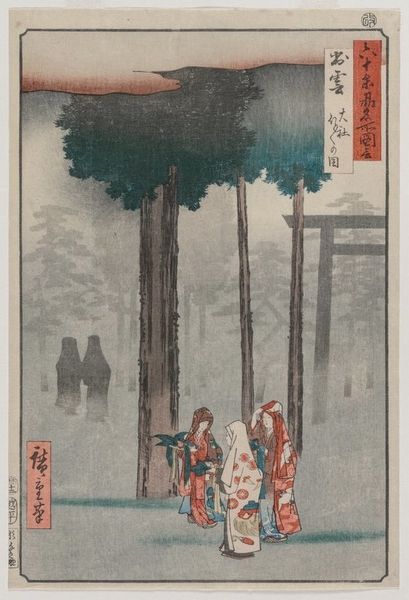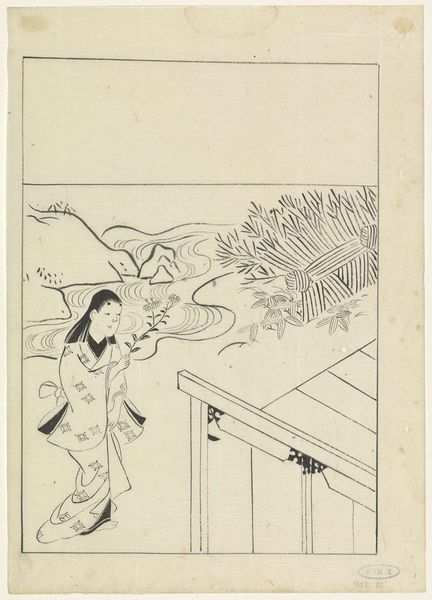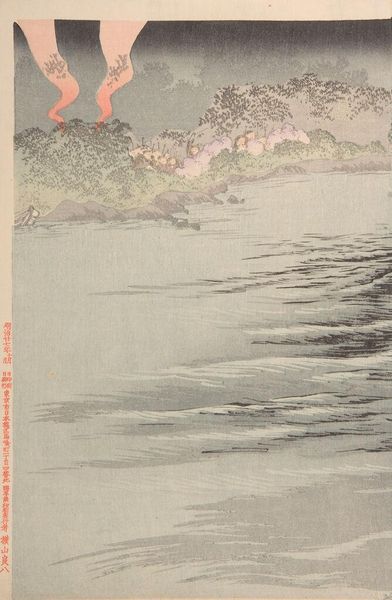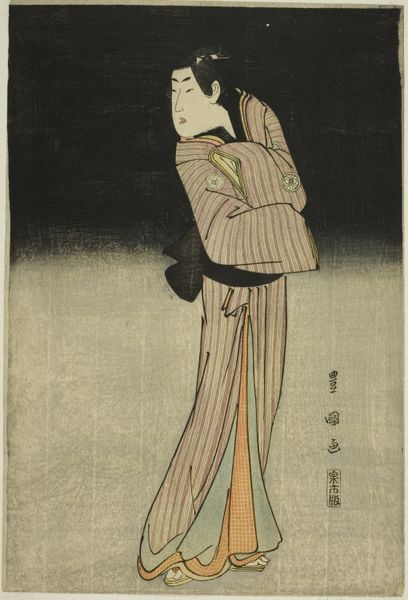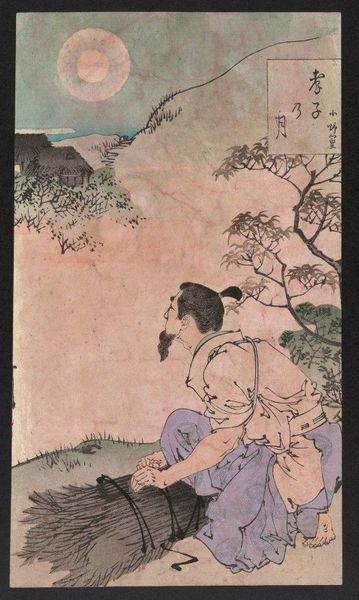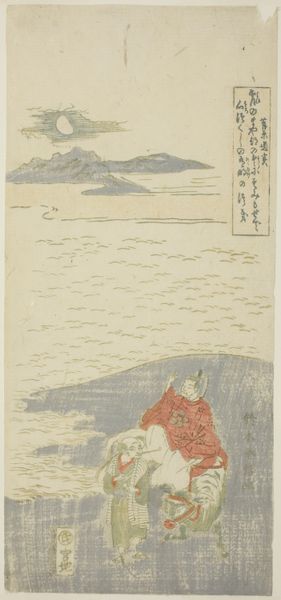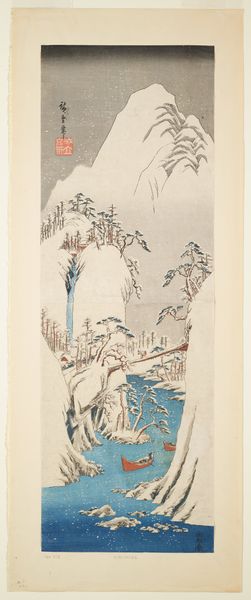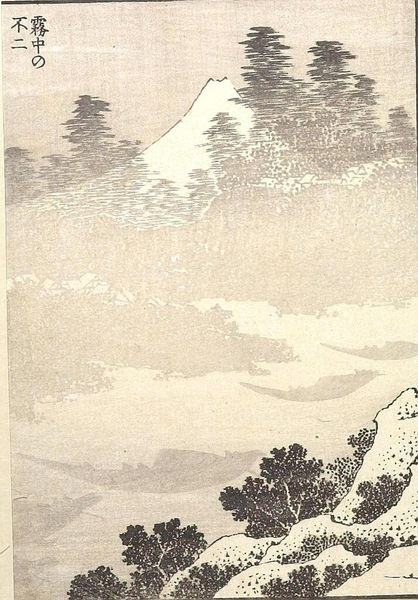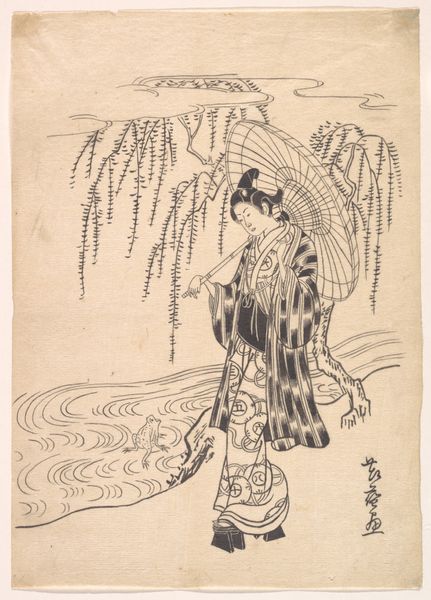
Copyright: Public Domain: Artvee
Curator: I am immediately drawn to the mistiness of this image. There's such a serene feeling radiating from it, despite the drama of the waterfall. Editor: We are looking at “Japanese wagtail at waterfall,” a watercolor work by Ohara Koson, likely created between 1900 and 1930. It beautifully demonstrates the Ukiyo-e tradition, emphasizing a sense of transience with its focus on nature. Curator: That term, “transience,” feels so apt! I can almost hear the roar of the water juxtaposed against the tiny bird—a lone wagtail—perched on a rock. It speaks to resilience too. Isn't that amazing? The fragility of life against this backdrop of powerful nature? Editor: The application of watercolor lends itself especially well to representing ephemeral effects like mist and water. This piece also uses the interplay of materials in an interesting way. The paper itself becomes a medium with texture that would’ve needed skilled, calibrated blocks to print the image so evocatively. Curator: True! There is something really beautiful in his focus on nature as refuge—in the constant change, something is found to cherish. In this image the leaves seem still—despite them seemingly close to the turbulent cascade! A little wink towards hope. Editor: Right, but beyond personal interpretations, works such as this were increasingly consumed and mass-produced by printmaking cooperatives for trade with the West, as more and more landscapes circulated as signifiers of Japanese-ness in a globalized world. Curator: That shift in viewership really gives new layers to how to understand works like these. Thanks! I had never thought of it that way. Editor: Glad I could offer some perspectives regarding that. This work does so much with so little, capturing a sense of nature’s eternal push-and-pull and its changing value.
Comments
No comments
Be the first to comment and join the conversation on the ultimate creative platform.
